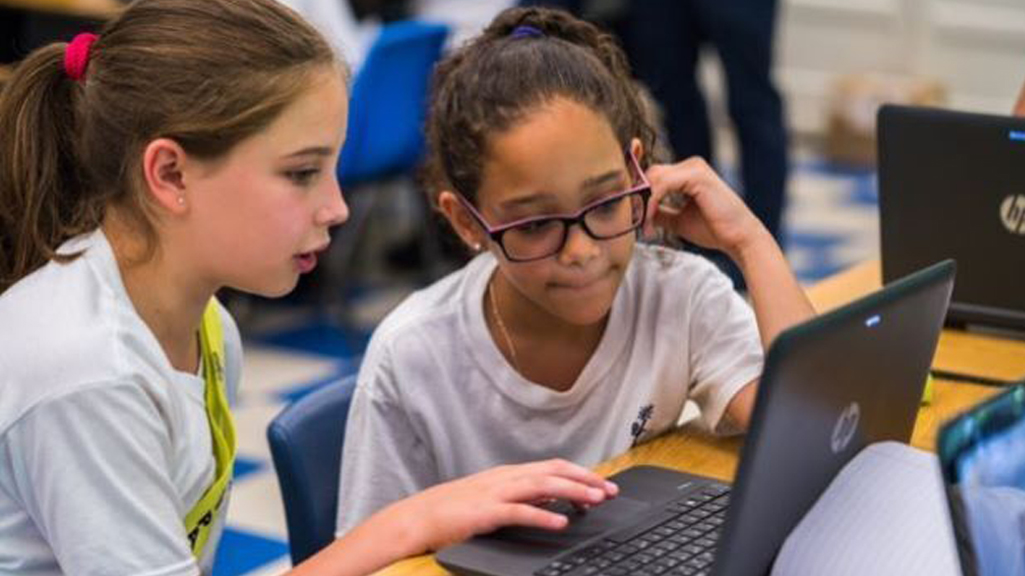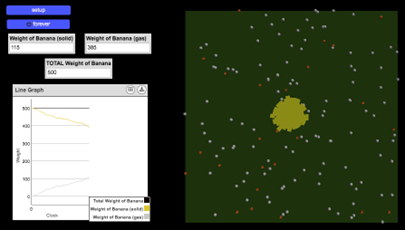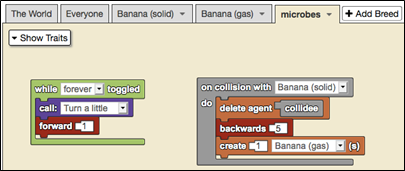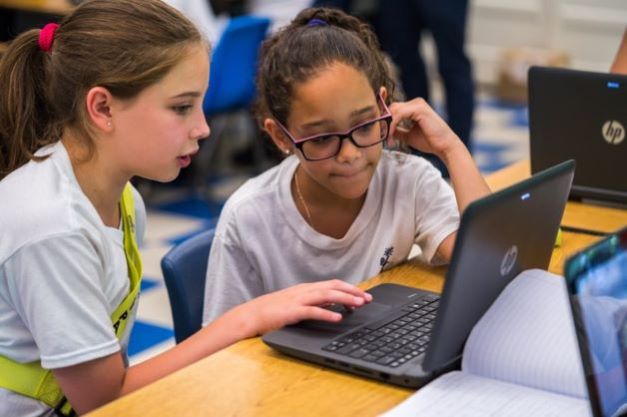Integrating Science, Language, and Computational Thinking With Multilingual Learners
By Scott E. Grapin, Alison Haas, Erin Rasmussen, and Okhee Lee
Posted on 2022-11-16

Disclaimer: The views expressed in this blog post are those of the author(s) and do not necessarily reflect the official position of the National Science Teaching Association (NSTA).
The Framework and the Next Generation Science Standards (NGSS) make progress toward the integration of domains in K-12 education by engaging students in explaining phenomena (science) and designing solutions to problems (engineering). The NGSS science and engineering practices (SEPs) also make connections to other domains, such as mathematics and computational thinking (SEP “Using mathematics and computational thinking”) and English language arts (SEP “Obtaining, evaluating, and communicating information”). However, the field is still lacking examples of curriculum that integrate domains in purposeful ways. Moreover, the field has only begun to consider what integration of domains means for students traditionally marginalized in STEM, such as multilingual learners, who experience systemic barriers that exclude them from asset-based STEM learning.
A recent consensus report by the National Academies of Sciences, Engineering, and Medicine (NASEM 2022) takes on these timely issues. The report highlights the potentials and pitfalls of integrating science and engineering with other domains, such as English language arts, mathematics, computational thinking, social studies, and social-emotional learning, particularly in preschool through elementary classrooms where “children work with teachers who support their progress across multiple content areas” (p. 130). The report also highlights how integration can work toward equity and justice for students traditionally marginalized in STEM.
In this blog, we illustrate the potentials of integrating science with other domains using our own research and development that integrate language and computational thinking into science with multilingual learners. After briefly describing our curriculum, we answer two key questions: (a) How can domains be integrated in mutually supportive ways?; and (b) How can integration of domains promote equity and justice? If you are interested in learning more about our work as well as the NASEM (2022) report, check out this webinar recording.
SAIL+CTM Curriculum
Science And Integrated Language Plus Computational Thinking and Modeling (SAIL+CTM) is a fifth-grade NGSS-designed curriculum that integrates science, language, and computational thinking. In each of the four units that make up the yearlong curriculum, students develop a computational model using StarLogo Nova to explain a local phenomenon (e.g., what happens to all the garbage produced by our local community). Over 3 years, we collaborated with teachers to implement the SAIL+CTM curriculum in their linguistically diverse science classrooms.
How Can Domains Be Integrated in Mutually Supportive Ways?
The NASEM (2022) report emphasizes that purposeful integration of domains leverages “mutually supportive connections” (p. 242). In our curriculum, we leverage the mutually supportive nature of science, language, and computational thinking.
First, our curriculum capitalizes on the mutually supportive nature of science and language. Language is integrated into the curriculum in ways that support students in making sense of science phenomena. As students engage in language-rich SEPs, such as arguing from evidence and constructing explanations, they share their thinking, build on each other’s ideas, and work collaboratively as a goal-oriented classroom community. Thus, language is a key tool for the community to do science together. At the same time, science provides a context for students to engage in meaningful interactions that promote language learning (Valdés et al. 2014). Students develop language as a product of their engagement in science (NASEM 2018). This is different from the traditional approach of learning language as a prerequisite to doing science, which can end up excluding students, especially multilingual learners. When language is integrated into science instruction, science and language learning are mutually supportive.
Second, our curriculum capitalizes on the mutually supportive nature of science and computational thinking. Computational thinking is integrated into each unit in ways that capitalize on its affordances for helping students explain science phenomena. For example, in one unit, students use a computational model to explain how microbes decompose a banana (Figure 1).


Figure 1. Computational model to explain how microbes decompose a banana
This capitalizes on an affordance of computational models for representing causal agents too small to see. In another unit, students use a computational model to explain why an organism disappeared from an ecosystem. This capitalizes on an affordance of computational models for iteratively testing predictions about phenomena that occur at large scales and over extended periods of time. As students use their computational models to explain science phenomena, they develop key concepts and practices in computational thinking, such as programming and systems thinking (Weintrop et al. 2016). In this way, science learning and computational thinking are mutually supportive.
How Can Integration of Domains Promote Equity and Justice?
The NASEM (2022) report emphasizes that integration of domains can be a key lever for promoting equity and justice for students traditionally marginalized in STEM. Specifically, the report highlights multiple approaches to equity and justice, from approaches that provide access to science to approaches that transform how science is done.
In our curriculum, integrating science, language, and computational thinking ensures all students have equitable access to interdisciplinary learning, which represents the work of STEM professionals. This emphasis on access is particularly crucial for multilingual learners, who are often pulled out of science classrooms for remedial English instruction (NASEM 2018) and have limited opportunities to enroll in advanced STEM classes (Thompson 2017).

Moreover, integrating science, language, and computational modeling transforms how we think about each of the domains and students’ abilities to engage in them. For example, whereas instruction with multilingual learners has traditionally focused on developing their skills in language (e.g., vocabulary, grammar), integrating computational thinking into science expands our assumptions of what “counts” as effective communication in the science classroom. When engaging in computational modeling, students represent their ideas in a variety of ways beyond just language, including through code blocks of different shapes and arrangements, dynamic visualization, and interactions with peers around their models (see Figure 2). In this way, our curriculum aims to synergize the affordances of computational models with the assets that multilingual learners bring to science classrooms. Integrating the domains, then, isn’t just additive but transformative for multilingual learners.
Integration of domains can also be transformative when it is anchored in pressing societal challenges impacting students’ lives, such as the disproportionate impact of COVID-19 on traditionally marginalized communities. Anchoring integration in societal challenges cultivates the rich knowledge and experiences that multilingual learners bring from their homes and communities to design justice-centered solutions to these challenges.
A New Role for Teachers
To be sure, integration is not without its difficulties (NASEM 2022). Teachers will have different levels of preparation in the domains they are integrating and will likely experience some discomfort as they chart new waters. But this discomfort comes with a silver lining: It offers an unprecedented opportunity for teachers to truly center the knowledge, experiences, and ways of making meaning that students bring to the science classroom. In this way, integration offers the potential to eschew traditional “teacher as sole expert” models of instruction and transform science classrooms into places where students’ assets are recognized, valued, and sustained.
References
National Academies of Sciences, Engineering, and Medicine. (2018). English learners in STEM subjects. Transforming classrooms, schools, and lives. National Academies Press. https://www.nap.edu/catalog/25182/english-learners-in-stem-subjects-transforming-classrooms-schools-and-lives
National Academies of Sciences, Engineering, and Medicine. (2022). Science and engineering in preschool through elementary grades: The brilliance of children and the strengths of educators. National Academies Press. https://nap.nationalacademies.org/catalog/26215/science-and-engineering-in-preschool-through-elementary-grades-the-brilliance
Thompson, K. (2017). What blocks the gate? Exploring current and former English learners’ math course-taking in secondary school. American Educational Research Journal, 54(4), 757-798. https://doi.org/10.3102/0002831217706687
Valdés, G., Kibler, A., & Walqui, A. (2014). Changes in the expertise of ESL professionals: Knowledge and action in an era of new standards. TESOL International Association. https://www.tesol.org/docs/default-source/papers-and-briefs/professional-paper-26-march-2014.pdf
Weintrop, D., Beheshti, E., Horn, M., Orton, K., Jona, K., Trouille, L., & Wilensky, U. (2016). Defining computational thinking for mathematics and science classrooms. Journal of Science Education and Technology, 25(1), 127-147. https://doi.org/10.1007/s10956-015-9581-5
Computer Science General Science Literacy Multilingual Learners Middle School Elementary High School


